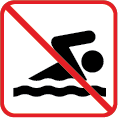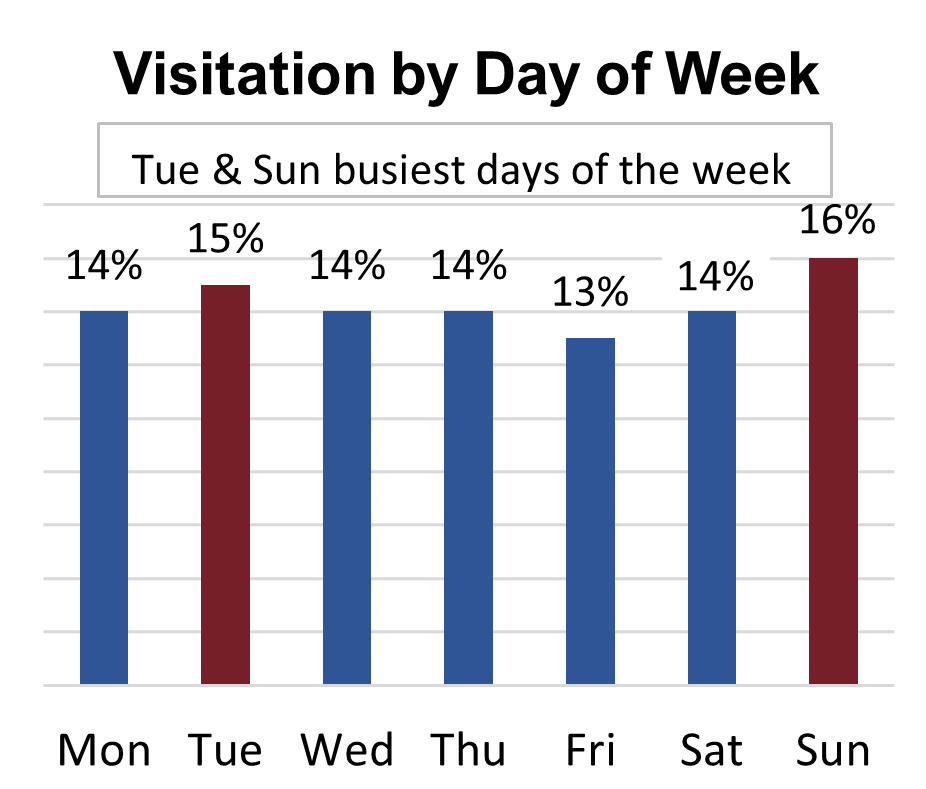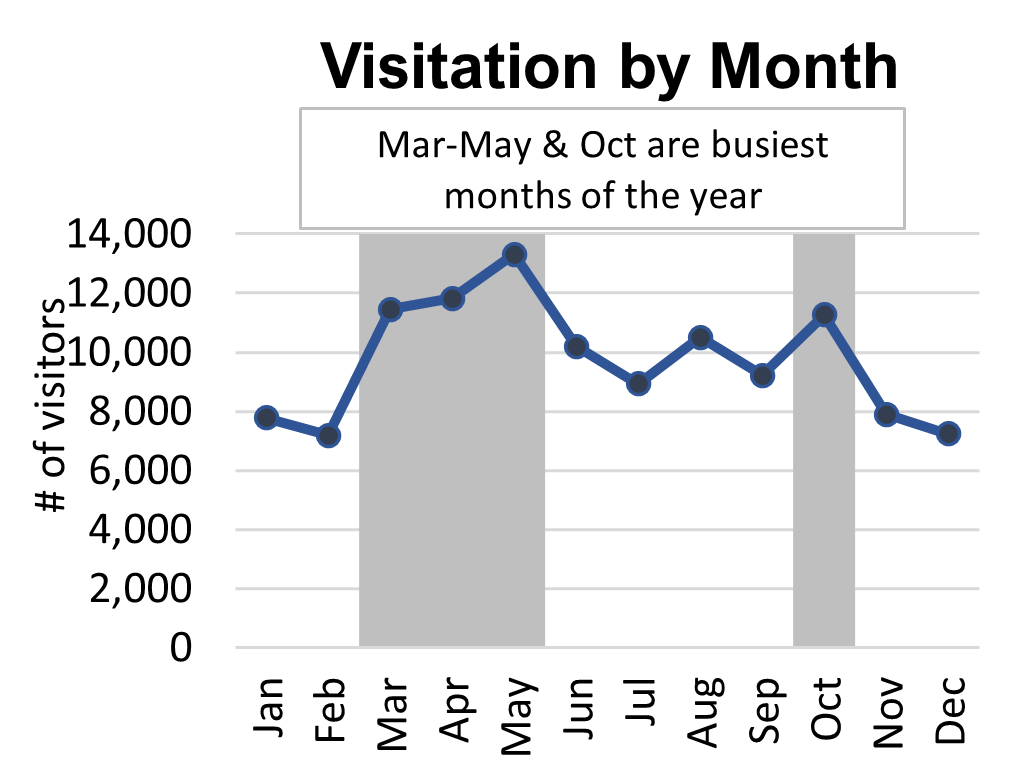Nature’s ability to heal, strengthened by human support, has transformed Walden Ponds from industrial gravel pits to a flourishing wetland habitat that yields year-round wildlife-watching opportunities.
Walden Ponds Wildlife Habitat
| Trails |
|---|
Walden Ponds Trails     2.9 miles – Easy |
Rules & Regulations







Wally Toevs Trailhead
Cottonwood Marsh Trailhead
Heatherwood Trailhead
Fishing at Wally Toevs Pond
- Open exclusively to people 65 years and older, people with disabilities, and their youth companions who are 15 years or younger.
- Fishing pier and restrooms are ADA accessible.
- Bluegill (limit 20), Rainbow Trout (limit 4), Largemouth Bass (limit 5 over 15″).
- Artificial and live bait permitted.
- Boats and float tubes are prohibited.
- Pond is stocked in the spring and fall with catchable-sized trout.
Fishing at Other Ponds
- Fishing is not allowed at Cottonwood Marsh.
- Bluegill (limit 20), Channel Catfish (limit 10), Largemouth Bass (catch and release).
- Artificial flies and lures only.
- Boats and float tubes are prohibited.
- Learn more about Fishing on Open Space.
Wetland habitats, nestled within the surrounding Great Plains, support aquatic plant and animal life and attract large numbers of migrating bird species. The 100 acres of grasses, wildflowers and trees surrounding these wetlands, are biologically diverse both in and out of the water.
Mammals
- Beaver
- Coyote
- Desert cottontail
- Mink
- Mule deer
- Muskrat
- Raccoon
- Red fox
- Rock squirrel
- Striped skunk
- Western harvest mouse
Birds
Fish
- Bluegill
- Channel catfish
- Common carp
- Fathead minnow
- Green carp
- Largemouth bass
Amphibians & Reptiles
- Bullfrog
- Bullsnake
- Garter snake
- Northern leopard frog
- Painted turtle
- Snapping turtle
- Striped chorus frog
Trees & Shrubs
- American plum (Prunus americana)
- Boxelder (Acer negundo)
- Coyote willow (Salix exigua)
- Fleshy hawthorn (Crataegus succulenta)
- Plains cottonwood (Populus deltoides var. monilifera)
- Rocky Mountain juniper (Juniperus scopulorum)
- Rubber rabbitbrush (Ericameria nauseosa)
- Western poison ivy (Toxicodendron rydbergii)
Grass, Sedges & Cattails
- Blue grama (Bouteloua gracilis)
- Broad-leaved cattail (Typha latifolia)
- Hairy grama (Bouteloua hirsuta)
- Narrow-leaved cattail (Typha angustifolia)
- Reed canary grass (Phalaris arundinacea)
- Sideoats grama (Bouteloua curtipendula)
Aquatic & Ferns
- Common duckweed (Lemna minor)
- Smooth horsetail (Equisetum laevigatum)
White Wildflowers
- Common yarrow (Achillea millefolium)
- Common water crow-foot (Ranunculus aquatilis)
- Field chickweed (Cerastium arvense)
- Hemp dogbane (Apocynum cannabinum)
- Red-osier dogwood (Cornus sericea ssp. sericea)
- Star-flowered lily-of-the-valley (Maianthemum stellatum)
- Thistle poppy (Argemone polyanthemos)
- White heath aster (Symphyotrichum ericoides)
- Wild cucumber (Echinocystis lobata)
- Wild licorice (Glycyrrhiza lepidota)
Yellow Wildflowers
- Giant goldenrod (Solidago gigantea)
- Golden currant (Ribes aureum)
- Great blanketflower (Gaillardia aristata)
- Hairy evening primrose (Oenothera villosa)
- Hairy false goldenaster (Heterotheca villosa)
- Plains pricklypear (Opuntia macrorhiza)
- Upright prairie coneflower (Ratibida columnifera)
Pink, Orange & Red Wildflowers
- Missouri foxtail cactus (Escobaria missouriensis)
- Scarlet globemallow (Sphaeralcea coccinea)
- Swamp milkweed (Asclepias incarnata)
- Velvetweed (Oenothera curtiflora)
- Water smartweed (Persicaria amphibia)
- Western snowberry (Symphoricarpos occidentalis)
- Wild four o’clock (Mirabilis nyctaginea)
- Woods’ rose (Rosa woodsii)
Purple & Blue Wildflowers
- American brooklime (Veronica americana)
- Blue vervain (Verbena hastata)
- Desert false indigo (Amorpha fruticosa)
- Dotted gayfeather (Liatris punctata)
- Lewis flax (Linum lewisii)
The ground beneath your feet is comprised of rocks which have traveled from the high peaks to the plains below. The uplift of the Southern Rocky Mountains began 65 million years ago. As the peaks rose, streams eroded and carved the landscape.
In the past, as it does today, Boulder Creek tumbled onto the plains from the western peaks and foothills, carrying with it weathered mountain rock. Sediments of loose clay, silt, sand, and gravel traveled with Boulder Creek’s flow as it made its way to level ground. The sediments were deposited on a broad, flat area bordering Boulder Creek called an alluvial floodplain. Walden Ponds is located on this floodplain. Though this ground now makes up the plains, it was once part of the high peaks.
Gravel Mine
Gravel was first mined in 1958. Open pits and puddles of groundwater were all that remained after the property had been stripped 15 feet down to bedrock.
Reclamation
In 1974, the county initiated a reclamation program after county residents expressed strong interest in creating a wildlife habitat. Piles of rock were compacted into dikes creating three ponds. Two additional ponds were added during the 1990s. Tree and shrub seedlings were planted and dry areas were seeded to help foster natural re-vegetation. The ponds were allowed to fill with groundwater and then stocked with fish.
Evolving Ecosystem
Walden Ponds Wildlife Habitat first opened to the public in October 1975 and is a work in progress, a park that is still evolving as a wildlife habitat and recreational retreat.
The Name
Contrary to what many believe, Walden Ponds is not a reference to Thoreau’s pond of the same name. It is named after Walden “Wally” Toevs, the Boulder County Commissioner who spearheaded the plan to convert the gravel pits into a wildlife habitat in the 1970s.







